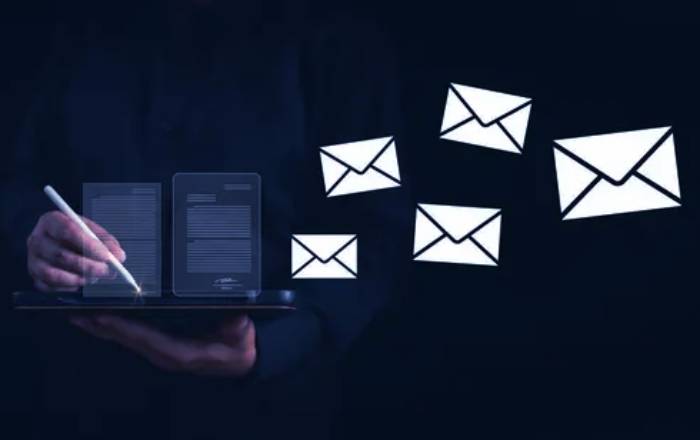Windows SMTP Service Best Practices For
Improved Email Deliverability And Security
Leveraging the Windows SMTP Service for email transmission can serve as an effective and dependable option for organizations. However, to achieve optimal deliverability and security of emails, it is crucial to implement precise configurations and follow established best practices. This guide will delve into key strategies designed to enhance the functionality of your Windows SMTP Service while safeguarding it against potential vulnerabilities, thereby ensuring that your emails arrive at their intended recipients promptly and securely.
1. Implement Access Control Measures
It is essential to limit access to your SMTP service in order to ensure a secure environment and to deter unauthorized usage. By permitting connections solely from authorized users and specific IP addresses, you can effectively manage who is allowed to access your SMTP server.
- Allow Specific IPs: Limit the IP addresses that can connect to your SMTP server by creating an allowlist of trusted IPs.
- User Authentication: Enable authentication so that only users with the correct credentials can send emails through the server.

2. Use Authentication and Encryption
Implementing SMTP authentication and encryption is crucial for enhancing security, as it prevents unauthorized individuals from accessing your server.
- Enable SMTP Authentication: Ensure that users provide valid credentials before they can send emails.
- Encrypt Connections with TLS: Set up Transport Layer Security (TLS) to encrypt emails in transit, safeguarding them from interception.
3. Monitor and Limit Outbound Email Volume
Sending a large number of outbound emails may result in deliverability challenges and the risk of being blacklisted if your SMTP server is perceived as a source of spam. Implementing rate limits on outbound traffic is an effective strategy to safeguard against the improper use of the SMTP service.
- Set Outbound Rate Limits: Control the number of emails sent per minute or hour to prevent overload.
- Enable Throttling: Configure rate-limiting options to restrict the number of messages that can be sent within a specified time frame.
4. Establish Email Authentication Protocols
To safeguard the reputation of your domain and guarantee that your emails are regarded as credible by recipients, it is essential to adopt SPF, DKIM, and DMARC authentication protocols.
- SPF (Sender Policy Framework): Lists authorized servers that can send emails on behalf of your domain.
- DKIM (DomainKeys Identified Mail): Adds a digital signature to verify the legitimacy of your emails.
- DMARC (Domain-Based Message Authentication, Reporting, and Conformance): Provides instructions for handling emails that fail SPF and DKIM checks, preventing unauthorized use of your domain.
Configured in your DNS settings, these protocols enable recipients to verify the authenticity and integrity of your emails, minimizing the likelihood of them being marked as spam.
5. Use a DNS-Based Blackhole List (DNSBL)
A DNS-based Blackhole List (DNSBL) filters emails from recognized spam sources. By configuring your Windows SMTP service to utilize DNSBL databases, you can improve security by preventing connections from these spam addresses.
- Integrate DNSBL Services: Incorporating DNSBL services into your SMTP server enables automatic blocking of connections from known spam sources.
- Prevent Spam Ingress: DNSBL checks minimize unwanted traffic and safeguard your server's email reputation.
DNSBL can be configured in Windows SMTP through firewall settings or by utilizing third-party spam filters.
6. Conduct Regular Monitoring and Logging
Consistently analyzing SMTP logs can uncover unauthorized access and suspicious behavior, enabling early detection and response to potential issues.
- Enable Logging: Monitor login attempts, dispatched emails, and unsuccessful authentication efforts. These records are essential for security incident investigations.
- Review Outbound Activity: Observe irregular trends, like abrupt spikes in outgoing emails, as they may signify compromised accounts. Read our comprehensive guide.
7. Update and Patch Windows SMTP Regularly
Regularly updating your Windows server and SMTP service is crucial for applying the latest security patches, thereby reducing potential vulnerabilities to attacks.
- Automatic Updates: Activate automatic updates on Windows Server to guarantee prompt application of security patches.
- SMTP Patches: Regularly check for SMTP-specific patches or updates, which can improve performance and address known security issues.

8. Implement Outbound Spam Filtering
Outbound spam filtering stops spam emails from being sent from your server, which is crucial for protecting your IP's reputation. This process helps prevent blacklisting and boosts your domain's credibility.
- Third-Party Filtering Tools: Use tools to scan outgoing emails for spam content or suspicious patterns.
- Content Filtering Rules: Set up content rules to flag and block emails containing spammy language or malicious attachments.
These filters can be implemented via third-party SMTP filters or by configuring advanced content filtering options in your SMTP service.